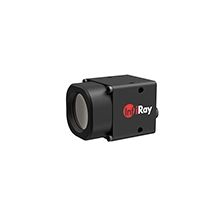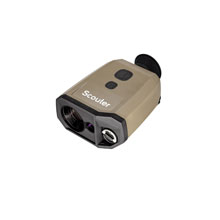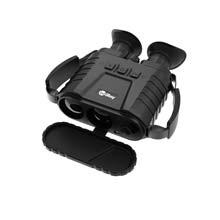Does Thermal Monocular Work in Daylight And Why

Thermal monoculars have revolutionized the way we perceive our surroundings, especially in low-light conditions. But what about their efficacy during daylight? Do they still hold their value under the bright sun? Let's delve into the intricacies of thermal monoculars, exploring their functionality, applications, and why they remain indispensable tools regardless of the time of day.
Unveiling Thermal Monoculars: A Daylight Perspective
Thermal monoculars, equipped with cutting-edge infrared technology, are renowned for their ability to detect heat signatures emitted by objects, animals, or humans. Unlike traditional optical devices, they rely on thermal imaging to create visual representations based on temperature differentials rather than visible light.

Understanding Thermal Imaging Technology
At the core of a thermal monocular lies its thermal imaging sensor, which detects infrared radiation emitted by objects. This radiation, invisible to the naked eye, varies based on the temperature of the object. The sensor then converts these thermal signatures into electronic signals, which are processed to generate a digital image.
Daylight Performance: Myth vs. Reality
One common misconception is that thermal monoculars are ineffective in daylight due to the abundance of ambient light. However, this notion overlooks the fundamental principle of thermal imaging: it operates independently of visible light. Unlike traditional optics, thermal technology detects heat, making it equally efficient regardless of lighting conditions.

Applications of Thermal Monoculars Beyond the Night
While thermal monoculars excel in nocturnal environments, their utility extends far beyond twilight hours. Let's explore some scenarios where thermal monoculars prove invaluable during the day:
Wildlife Observation: In dense foliage or vast landscapes, thermal imaging cuts through visual obstructions, enabling wildlife enthusiasts to observe animals even in broad daylight.
Search and Rescue: During daylight search operations, thermal monoculars enhance visibility by highlighting temperature anomalies, aiding in locating missing persons or survivors.

Choosing the Right Thermal Monocular
For those considering investing in a thermal monocular, several factors should be taken into account:
Resolution: Higher resolution sensors offer sharper images and better clarity, crucial for precise target identification.
Range: Evaluate the device's detection range, especially if it will be used for long-distance observation or hunting.
Features: Consider additional features such as digital zoom, image recording, and Wi-Fi connectivity for enhanced functionality.

The Daylight Advantage of Thermal Monoculars
Thermal monoculars are not confined to the cover of darkness; they thrive in daylight environments, offering unparalleled visibility regardless of external lighting conditions. Whether for wildlife observation, search and rescue, or outdoor exploration, a quality thermal monocular is a versatile tool that empowers users with enhanced situational awareness and detection capabilities.
Unlock the potential of thermal imaging technology and experience the world in a new light, both day and night.

















